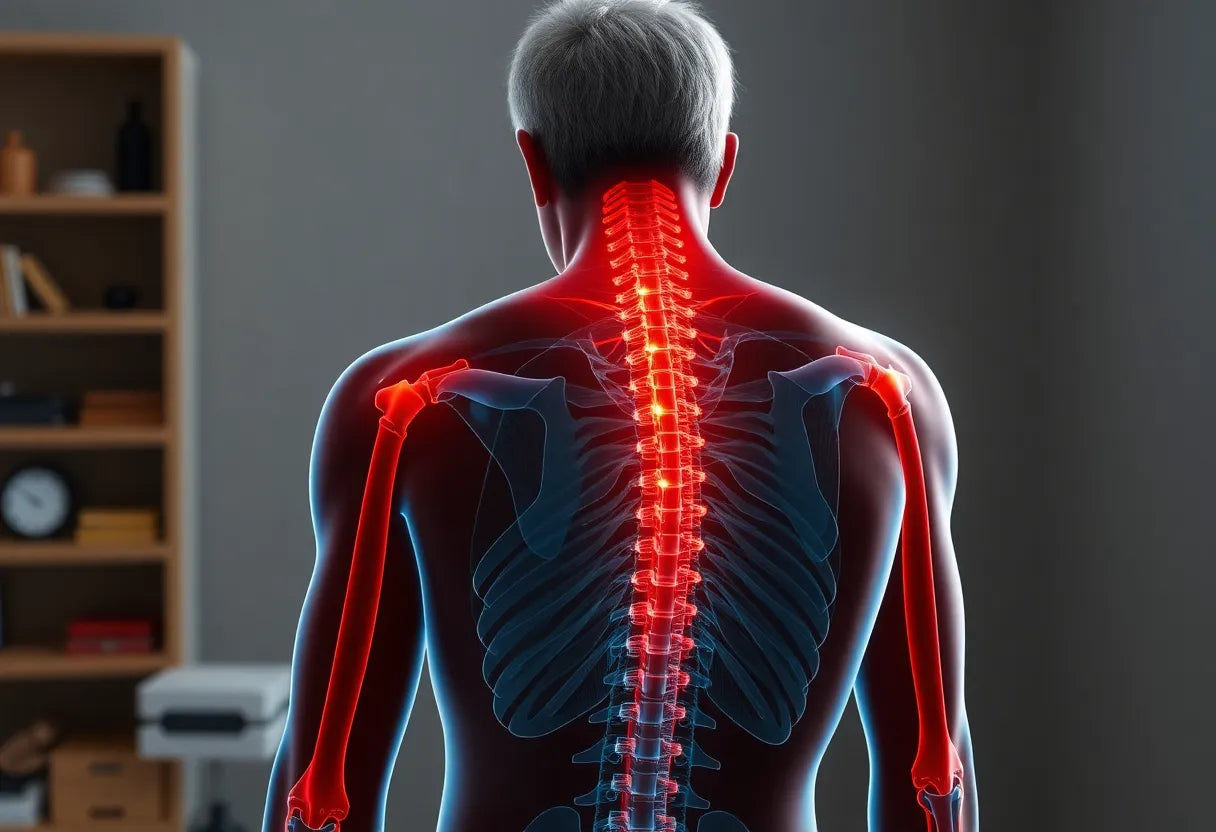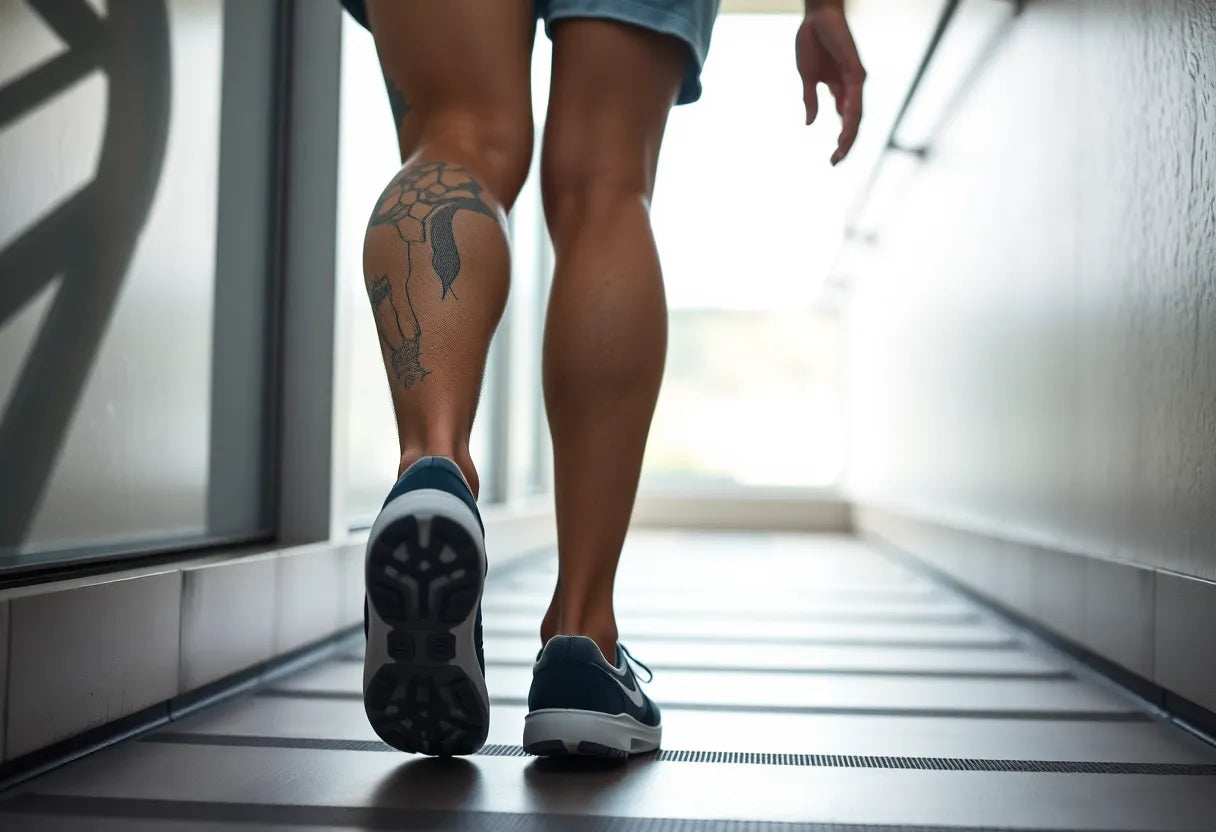The spine is an incredible structure that plays a vital role in our everyday lives. It enables movement, provides essential support, and contributes significantly to our overall health. At the heart of this complex system are the vertebrae, often referred to as the building blocks of the spine. These small yet mighty components are crucial for both the structural integrity and flexibility of the spine, allowing us to perform a wide range of activities with ease.
understanding the spine's composition
The human spine is a remarkable feat of engineering, composed of 33 individual vertebrae that interlock to form a flexible column. This column not only supports the body's weight but also protects the spinal cord, a critical component of the central nervous system. Each vertebra is uniquely designed to absorb and distribute the stresses of daily life, from walking and running to lifting and bending. The spine is divided into distinct regions, each with its own characteristics and functions, including the cervical, thoracic, lumbar, sacral, and coccygeal regions.
purpose of this blog
The purpose of this blog is to demystify the structure and function of vertebrae, shedding light on their clinical and anatomical significance. By exploring the intricacies of these vital components, we aim to provide a deeper understanding of how they contribute to our health and well-being. Whether you're curious about the anatomy of your spine or seeking insights into common spinal conditions, this blog will offer valuable information to enhance your knowledge and appreciation of this essential part of the human body.
definition and structure of vertebrae
At the core of the spine's complex anatomy lies the vertebra, an irregularly shaped bone that forms each segment of the spinal column. Each vertebra consists of three main parts: the vertebral body, the vertebral arch, and a series of processes. The vertebral body is the large, cylindrical front portion of the vertebra, providing strength and supporting body weight. Behind it, the vertebral arch forms a protective ring around the spinal cord, which travels through the vertebral canal. This canal is crucial for safeguarding the spinal cord against injury.
Extending from the vertebral arch are seven bony projections known as processes. These include the spinous process, which can be felt as the "spine" running down the back, two transverse processes on each side for muscle attachment, and four articular processes that connect with adjacent vertebrae. Between each vertebra lies an intervertebral disc, acting as a shock absorber to cushion the spine during movement.
types and regions of vertebrae
The human spine is divided into five distinct regions, each characterized by unique vertebrae that serve specific functions. Understanding these regions helps appreciate the spine's overall functionality and adaptability.
cervical vertebrae (C1–C7)
The cervical region consists of seven vertebrae, known for their small size and high mobility. These vertebrae support the head and allow for a wide range of motion, including nodding and rotation. The first two cervical vertebrae, the atlas (C1) and axis (C2), are specially adapted to facilitate these movements. The atlas supports the skull, while the axis allows the head to pivot, enabling rotation.
thoracic vertebrae (T1–T12)
The twelve thoracic vertebrae are larger and less mobile than their cervical counterparts. They are distinguished by their connection to the ribs, forming the back of the rib cage. This region provides stability and protects vital organs within the thoracic cavity, such as the heart and lungs.
lumbar vertebrae (L1–L5)
The lumbar region comprises five vertebrae that are the largest and strongest in the spine. These vertebrae bear the majority of the body's weight and are crucial for supporting the lower back. Their robust structure allows for significant movement and flexibility, including bending and twisting.
sacral and coccygeal vertebrae
The sacral region consists of five vertebrae that are fused together to form the sacrum, a triangular bone that connects the spine to the pelvis. Below the sacrum, the coccygeal region includes four fused vertebrae that form the coccyx, commonly known as the tailbone. These fused vertebrae contribute to pelvic stability and support.
functions of vertebrae
Vertebrae play a pivotal role in maintaining the spine's structural integrity and facilitating movement. They provide the necessary support to keep the body upright and protect the spinal cord from damage. The spine's natural curvature, aided by the intervertebral discs, allows for a range of motions, including flexion, extension, lateral bending, and rotation. This flexibility is essential for everyday activities, from bending to pick up objects to twisting the torso.
In addition to supporting movement, vertebrae serve as attachment points for muscles and ligaments, further enhancing stability and motion control. The intricate design of each vertebra and its integration with surrounding structures underscore the spine's remarkable ability to balance strength, flexibility, and protection.
clinical relevance of vertebrae health
The health of your vertebrae is crucial, as these structures can be affected by various conditions, impacting overall mobility and quality of life. Common issues include disc degeneration, where the intervertebral discs lose their cushioning ability, leading to pain and reduced flexibility. Herniation occurs when a disc protrudes, potentially compressing nerves and causing discomfort. Scoliosis, an abnormal lateral curvature of the spine, can also affect vertebral alignment, leading to pain and mobility issues. These conditions underscore the importance of maintaining vertebral health through proper care and awareness.
ergonomic considerations for spine health
Incorporating ergonomic solutions into daily life is essential for supporting vertebral health and preventing injuries. Ergonomic aids such as lumbar supports can help maintain the natural curvature of the spine while sitting, reducing strain on the lumbar vertebrae. For those who work at desks, adjustable chairs and standing desks can promote better posture and decrease the risk of developing back pain. Cervical aids, such as neck pillows, can support the cervical vertebrae during rest, minimizing tension and discomfort. These tools are vital for managing pain and ensuring long-term spinal health.

Lumbar support belt
Bælte der stabiliserer og lindrer smerter i lænden – perfekt til daglig støtte og smertelindring.

Women's Posture Shirt™ - White
Forbedre din holdning og få smertelindring med denne dokumenterede holdningsskjorte til kvinder.
conclusion
Understanding the anatomy and function of vertebrae is key to appreciating their role in our overall health. These structures not only provide essential support and protection for the spinal cord but also enable a wide range of movements that are crucial for daily activities. By being aware of the clinical implications of vertebral conditions and adopting ergonomic practices, individuals can take proactive steps to maintain spinal health and prevent injury. Whether through lifestyle adjustments or ergonomic aids, prioritizing vertebral well-being is a vital component of a healthy lifestyle.
Frequently Asked Questions
What is the function of vertebrae in the spine?
Vertebrae provide structural support, protect the spinal cord, and enable movement and flexibility. They are essential for maintaining posture and facilitating a wide range of motions.
How many vertebrae are in the human spine?
Typically, there are 33 vertebrae in the human spine, divided into cervical, thoracic, lumbar, sacral, and coccygeal regions.
What are common conditions affecting vertebrae?
Common conditions affecting vertebrae include disc degeneration, herniation, scoliosis, and fractures. These conditions can impact mobility and cause pain or discomfort.
How can ergonomic aids help with vertebral health?
Ergonomic aids can support proper posture, reduce strain, and alleviate pain associated with vertebral issues. By promoting better posture and reducing stress on the spine, these aids contribute to long-term spinal health.
Källor
- Hinge Health. (n.d.). "Vertebrae." Hinge Health Resources.
- University of Maryland Medical Center. (n.d.). "Anatomy and Function." UMMC Orthopedics.
- Wikipedia. (n.d.). "Vertebra." Wikipedia, The Free Encyclopedia.
- Globus Medical. (n.d.). "Anatomy of the Spine." Globus Medical Patient Education.
- Lumen Learning. (n.d.). "The Vertebral Column." Lumen Learning Anatomy & Physiology.
- American Association of Neurological Surgeons. (n.d.). "Anatomy of the Spine and Peripheral Nervous System." AANS.
- Merriam-Webster. (n.d.). "Vertebra." Merriam-Webster Dictionary.
- National Cancer Institute. (n.d.). "Vertebral Column." NCI Dictionary of Cancer Terms.
- NCBI. (n.d.). "Vertebral Column." NCBI Bookshelf.
- TeachMeAnatomy. (n.d.). "Vertebral Column." TeachMeAnatomy.
- University of Rochester Medical Center. (n.d.). "Spine Anatomy." URMC Encyclopedia.
- Cleveland Clinic. (n.d.). "Spine Structure and Function." Cleveland Clinic Health Library.
- Osmosis. (n.d.). "Bones of the Vertebral Column." Osmosis.


















